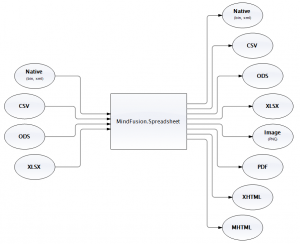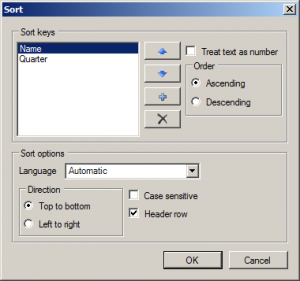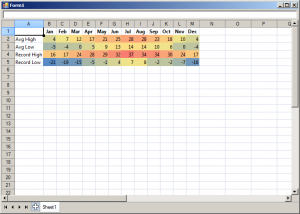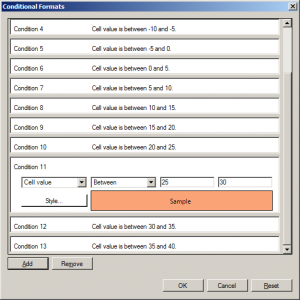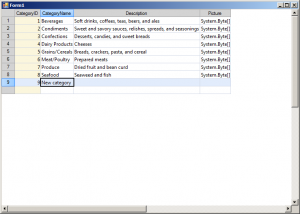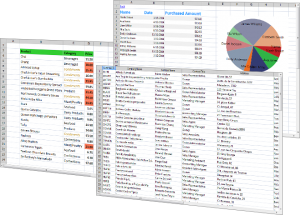The following scheme illustrates the file formats supported by MindFusion.Spreadsheet for WinForms:
Importing
MindFusion.Spreadsheet can load data from CSV (comma-separated values), XLSX (Office Open XML), ODS (OpenDocument Spreadsheet), and its native binary and XML formats. The files are imported through a set of importer classes: CsvImporter for CSV, ExcelImporter for XLSX, and CalcImporter for ODS. To import a file, create an instance of the respective importer class, set the necessary properties, and call its Import method. The following code demonstrates how to import a workbook from an existing XLSX file:
var excelImporter = new ExcelImporter(); excelImporter.Import(workbook, @"d:\workbook.xlsx");
Importing from CSV can be further facilitated through the use of a built-in CsvImportForm. The form provides the user interface to enter various options and preview the data before it is actually imported.
Exporting
MindFusion.Spreadsheet can export data to a variety of formats, including image, PDF, CSV, XLSX, ODS, HTML and MHTML. In addition the workbooks can be previewed and printed to paper and XPS. The workbooks and worksheets are exported through a set of exporter classes: ImageExporter for images, PdfExporter for PDF, CsvExporter for CSV, ExcelExporter for XLSX, CalcExporter for ODS, HtmlExporter for XHTML, and so on. Printing is done through the WorkbookPrinter class. To export a workbook, create an instance of the respective exporter class, set the necessary properties, and call the Export method. The following code demonstrates how to export a workbook to ODS:
var calcExporter = new CalcExporter(); calcExporter.Export(workbook, @"c:\mysheet.ods");
The following image illustrates a workbook exported to an XHTML file using the HtmlExporter class:
Additional information about the importing and exporting capabilities of MindFusion.Spreadsheet can be found in the online documentation of the component:
http://www.mindfusion.eu/onlinehelp/spreadsheetwinforms/index.htm?Importing.htm
http://www.mindfusion.eu/onlinehelp/spreadsheetwinforms/index.htm?Exporting_0.htm
The trial version of MindFusion.Spreadsheet for WinForms can be downloaded from here:
Download MindFusion.Spreadsheet for WinForms Trial Version
About MindFusion.Spreadsheet for WinForms: A powerful .NET spreadsheet component with great capabilities for editing, styling and formatting large amounts of data.

